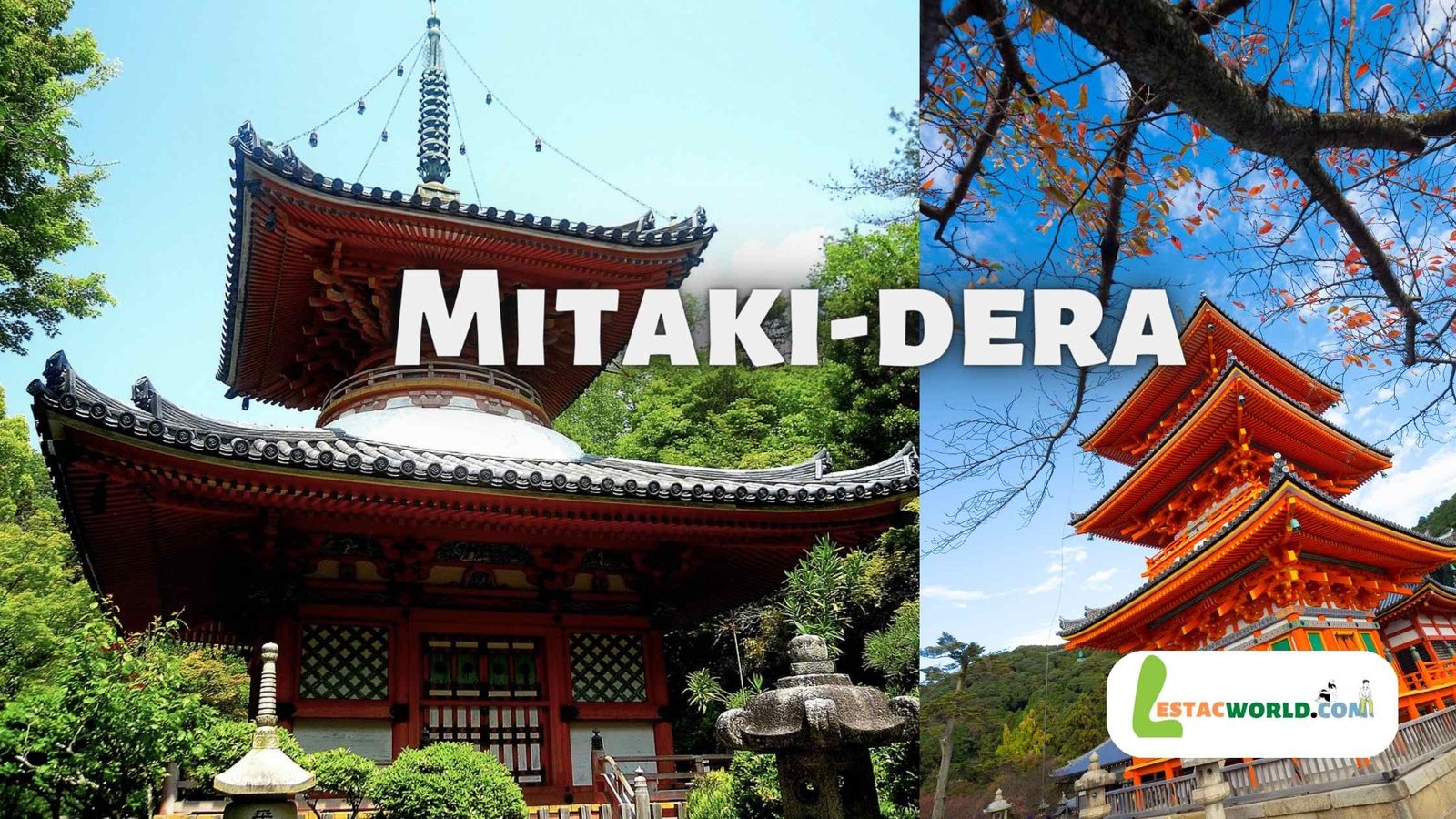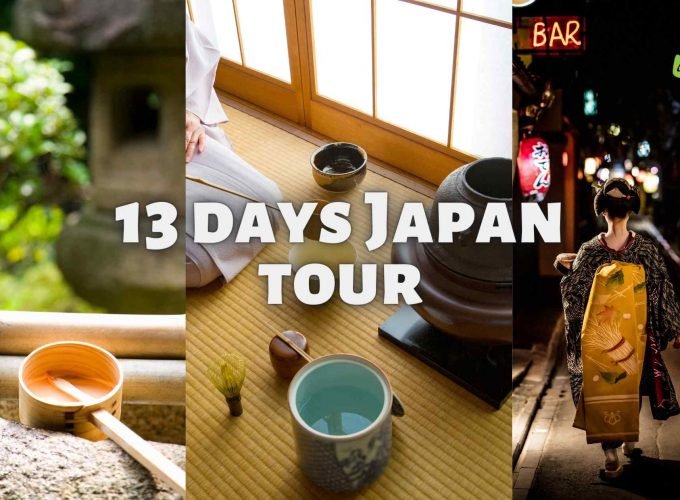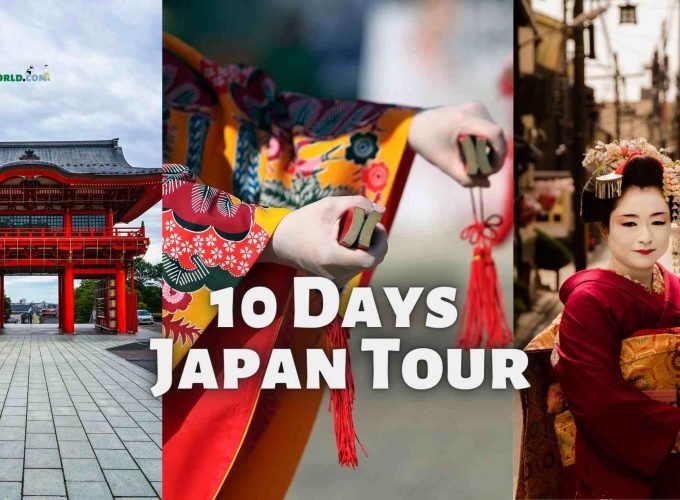About Mitaki-dera
There is a Buddhist temple known as Mitaki-dera that may be found in the city of Hiroshima in Japan. The temple is a famous tourist site because to the lovely gardens that surround it. These gardens feature a waterfall as well as a pagoda that has three levels.
It is not known when exactly the temple was established, however it is assumed to have been during the Heian period. The actual date of the temple’s founding is unknown (794-1185). The temple has a long history and has been the subject of numerous reconstructions and restorations over the course of that history, particularly in 1945 when it was devastated as a result of the bombing of Hiroshima.
In addition to having stunning gardens, Mitaki-dera is well-known for the association it has with both peace and hope in the world. Those who come to the temple use it both as a representation of serenity and a place to reflect on their lives. In the spring, when cherry blossoms are in bloom, it is a popular location for hanami, which literally translates to “viewing of cherry blossoms,” and visitors flock to the temple all 12 months of the year to appreciate its natural beauty and historical significance.
Visitors to Mitaki-dera have the opportunity to stroll about the grounds of the temple, which feature a number of buildings and structures, such as a main hall, a hall dedicated to the Buddha of Compassion, and a statue of Kannon, the goddess of mercy. The temple is also the location of a number of significant Buddhist artifacts and works of art, some of which include paintings, sculptures, and calligraphic works.
History timeline of Mitaki-dera
There is a Buddhist temple known as Mitaki-dera that may be found in the city of Hiroshima in Japan. It is just one of the many temples in Japan that has a profound cultural impact and a long and illustrious history. The following is a timeline of some of the most significant events that have occurred over the history of Mitaki-dera in Hiroshima:
- It is reported that the priest Shodo established the temple during the Heian period (794-1185) by building a thatched hut close to the waterfall that is located on the site. This took place in the eighth century.
- 11th century: During the Heian period, the temple underwent expansion and grew in prominence as a site of prayer for a large number of people.
- 16th century: The temple was devastated by conflict during the Sengoku period (1467-1603), which occurred during the 16th century. The temple was afterwards restored by the priest Gessho.
- 17th century: During the Edo period (1603-1868), the temple was once again destroyed by battle. Later, the priest Shunkai was tasked with restoring the temple to its former glory.
- The temple received its status as a national treasure and underwent additional repairs during the Meiji period, which lasted from 1868 through 1912. The 19th century.
- The bombing of Hiroshima in 1945 caused significant damage to the shrine, which was built in the 20th century. Despite this, it was eventually repaired and now serves as a place of prayer as well as a symbol of both peace and optimism in the world.
In modern times, Mitaki-dera in Hiroshima has developed into a well-liked tourism site and a serene location for people to ponder in. In the spring, when cherry blossoms are in bloom, the temple is a favorite location for hanami, which literally translates to “viewing,” and its stunning gardens and picturesque environs draw people throughout the year.
How to reach Mitaki-dera
It is possible to go to Mitaki-dera, which is located in the city of Hiroshima in Japan, by a variety of different ways of transportation. Getting to the temple can be done in a few different ways, including the following:
By Train: Mitaki Station, which is served by the Miyajima Line, is the closest train station to Mitaki-dera and is also the name of the station itself. It takes approximately 25 minutes to get to Mitaki Station when departing from Hiroshima Station. The temple can be reached on foot in a short amount of time when starting from the station.
By Bus: By public transportation, you may get to Mitaki-dera on a number of different bus routes, including the 9 and the 36. The temple is easily accessible by bus from Hiroshima Station as well as other locations in the city.
By car: You can get to Mitaki-dera if you have a car and drive there. If you have a car, you can get there. Parking is provided in the area of the temple, though availability may be limited during times of high visitor volume.
Be advised that Mitaki-dera is located in a mountainous region, and the approach to the temple can be steep and twisting. This is the case regardless of the kind of transportation that you choose to use to get there. It is possible that you will have difficulty walking to the temple if you are not in good physical shape. Despite this, the trip to the temple is well worth it because of the stunning natural setting as well as the historical and cultural value of the building.
Do's and Dont's at Mitaki-dera
When visiting Mitaki-dera, there are some things you should do and some things you should avoid doing in order to show respect for the temple and its grounds. Here are some general guidelines:
Do’s:
- Dress modestly: Visitors should dress appropriately, covering their arms and legs and avoiding revealing clothing.
- Take off your shoes: Visitors are typically asked to remove their shoes before entering the main hall and other buildings within the temple grounds.
- Be quiet and respectful: Visitors should be quiet and respectful while they are on the temple grounds, as Mitaki-dera is a place of peace and reflection.
- Donate: Visitors can make a small donation to the temple if they wish. This helps to support the temple and its operations.
- Enjoy the beauty of the temple: Visitors are encouraged to take in the beauty of the temple and its surroundings, including the gardens, the waterfall, and the pagoda.
Dont’s:
- Take photos during worship: Visitors should avoid taking photos during worship services, as this is considered disrespectful.
- Touch or climb on statues and other objects: Visitors should avoid touching or climbing on statues and other objects within the temple grounds, as this can cause damage and is considered disrespectful.
- Litter: Visitors should not litter on the temple grounds and should properly dispose of any waste.
- Smoke: Smoking is generally not allowed on the temple grounds.
By following these guidelines, visitors can help to ensure that Mitaki-dera remains a place of peace and beauty for generations to come.
Highlights of Mitaki-dera
Mitaki-dera is a beautiful and historic Buddhist temple located in the city of Hiroshima, Japan. Here are some of the highlights that visitors can expect to see when they visit the temple:
- Gardens: The temple grounds are home to several beautiful gardens, including a Japanese garden with a waterfall, a rock garden, and a tea garden.
- Pagoda: A three-tiered pagoda is located within the temple grounds and is a popular spot for visitors to take photos.
- Main Hall: The main hall at Mitaki-dera is a traditional wooden building that serves as the center of worship at the temple.
- Hall of the Buddha of Compassion: This building is dedicated to Kannon, the goddess of mercy, and houses a statue of the Buddha of Compassion.
- Statues: There are several important statues within the temple grounds, including a statue of Kannon and a statue of Jizo, the guardian of travelers and children.
- Art and artifacts: Mitaki-dera is also home to several important works of art and Buddhist artifacts, including sculptures, paintings, and calligraphic works.
- Natural beauty: The temple is surrounded by beautiful natural scenery, including mountains and forests, and is a popular spot for hanami (cherry blossom viewing) in the spring.
These are just a few of the highlights that visitors can expect to see when they visit Mitaki-dera. Whether you are interested in Japanese culture, history, or religion, or simply want to admire the beauty of the temple and its surroundings, Mitaki-dera is a must-see destination.






Comment (0)